#St. Sava Cathedral
Explore tagged Tumblr posts
Text
ooohoohoh your girl* is having her little experimental film from a workshop shown at a film event >:3
#LETS GOOOOOOOOOOO#you know experimental filmmaking is more fun than 'normal' films... you can just do whatever and have fun#and i think i had a little too much fun with mine (3min meme format)#i named it 'communists build a temple' and it has random shots of tito. and the building of the st sava cathedral.#and the soundtrack is just a very very sped up anthem of yugoslavia#piksla.txt
7 notes
·
View notes
Photo
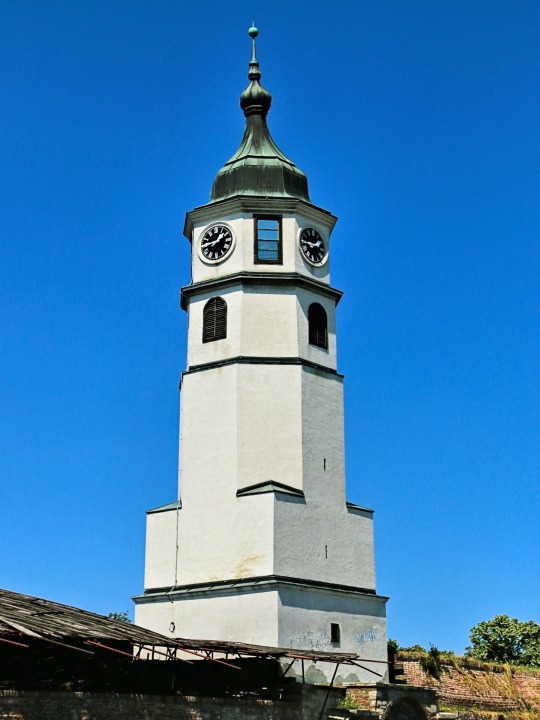
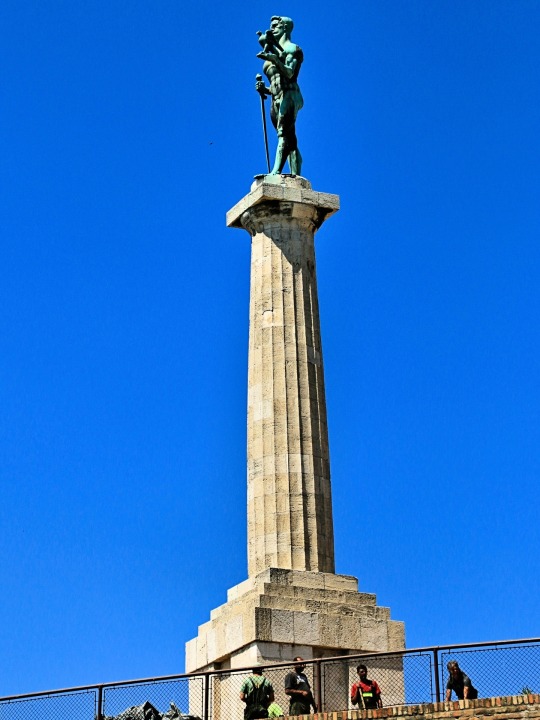
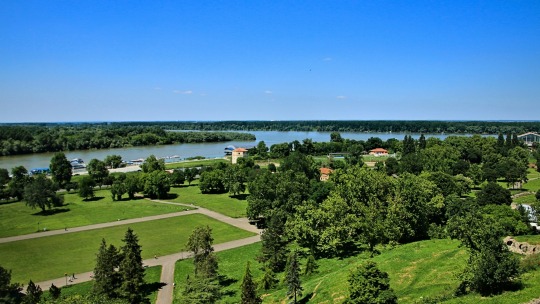

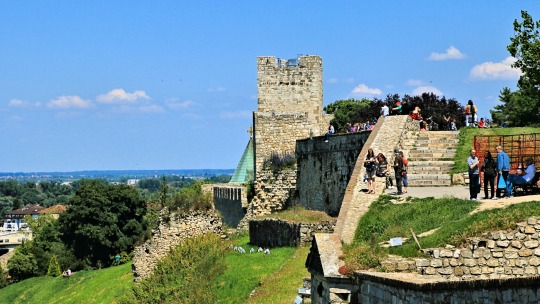




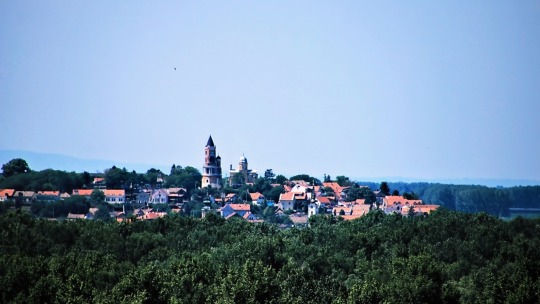
Kalemegdan 🏰
#And someday we'll look back and say it was fun#clock tower#statue of victory#kalemegdan#sava river#confluence#danube river#st. michael's cathedral#belgrade fortress#kalemegdan park#belgrade#serbia
10 notes
·
View notes
Text

St. Sava Cathedral, Belgrade *by Alina
405 notes
·
View notes
Text

St. Sava Cathedral [Source: OrthoChristian.com]
23 notes
·
View notes
Text
Saints&Reading: Thursday, November 30, 2023
november 17_november 30
THE HOLY MONK LAZARUS THE ICONOGRAPHER OF CONSTANTINOPLE ( 857)
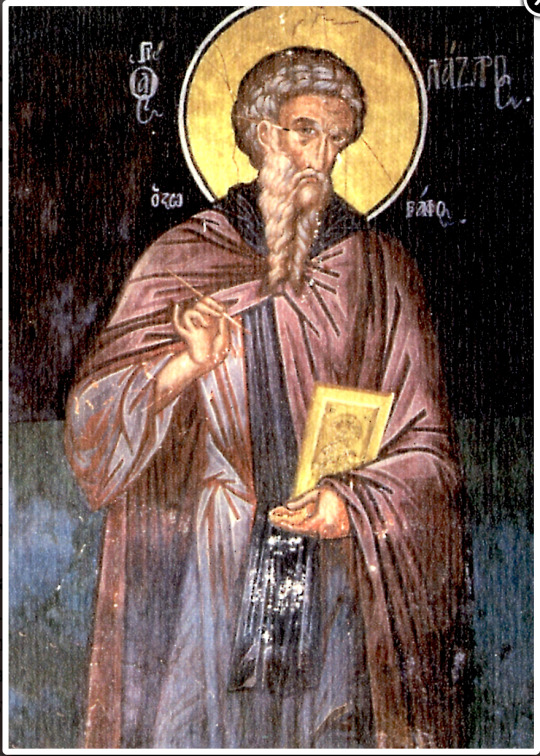
Saint Lazarus the Iconographer lived in Constantinople. He was a priest, led a strict ascetic life and painted holy icons. He fought against all heresy, enduring many afflictions from the Nestorians, Eutychians, and iconoclasts. Under the iconoclast emperor Theophilus (829-842), he was arrested and after cruel tortures, thrown into prison. Theophilus ordered horseshoes to be placed in a fire until they glowed red with the heat. Then they were put upon the iconographer’s hands, because he dared to paint icons of Christ and the saints. He was saved from execution by the intervention of the empress Theodora.
Saint Lazarus died in the year 857 while returning from Rome, where he had been sent in a delegation on church matters to Pope Benedict III (855-858). His remains were taken to Constantinople and buried in the church of Saint Evandrus.
Source: Orthodox Church in America
SAINT SEBASTIAN OF JACKSON AND SAN FRANCISCO (Serbia_1940)

Our venerable father Sebastian Dabovich (now St. Sebastian of Jackson and San Francisco) was a prominent Serbian priest in the Russian Mission in America in the 1890s and early 1900s. He founded numerous churches and was the author of several books. He died in Serbia in 1940 and was glorified as a saint on May 29th, 2015.
Born John Dabovich (Jovan Dabović) in San Francisco, California on June 21, 1863, to Serbian immigrant parents from Sassovae, Serbia, Archimandrite Sebastian grew up with the church in San Francisco where his parents operated a store. After finishing high school he served his parish as a reader and teacher.
In 1884, he was assigned to assist at St. Michael’s Cathedral in Sitka, Alaska before he was sent to Russia to prepare for a life as a missionary priest. After three years of study at the St. Petersburg and Kiev Theological Academies, John was tonsured a monk in 1887 with the name Sebastian and ordained a deacon. Following his ordination, Dn. Sebastian returned to San Francisco where he served as deacon at the San Francisco cathedral. He also taught at the pastoral school in San Francisco.

As more Serbians emigrated to the United States, Abp. Tikhon asked Fr. Sebastian to lead a Serbian Mission in the North American diocese. With his appointment to head the mission, Abp. Tikhon elevated Fr. Sebastian to archimandrite on August 15, 1905. For the next five years Archim. Sebastian led the Serbian Mission from its center at the Holy Resurrection Serbian Orthodox Church in Chicago, Illinois, where he was the parish priest.
In 1910, Fr. Sebastian asked for a release from the Serbian mission so that he could return to missionary work. Then in 1913, he joined the faculty of the newly opened St. Platon Seminary in Tenafly, New Jersey. Shortly thereafter feeling a call to service the church in his ancestral Serbia, Fr. Sebastian asked for a release from the American Mission. He went on to serve as a chaplain in the Serbian army in the Balkan Wars and World War I. Other than for brief visits to the United States in 1915 and 1917, Fr. Sebastian spent the rest of his life serving the Church of Yugoslavia.
Archim. Sebastian reposed in Yugoslavia on November 30, 1940, and was buried at the Monastery of Zicha. In 2007, his remains were disinterred and brought back to the cemetery at St. Sava Church in Jackson, California for reburial.
Source: Saint of North America

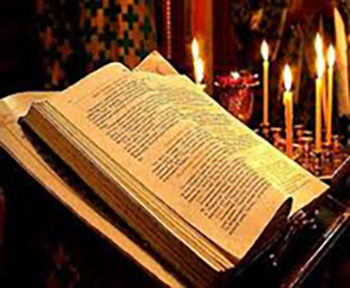
1 TIMOTHY 3:1-13
1 This is a faithful saying: If a man desires the position of a bishop, he wants a good work. 2 A bishop then must be blameless, the husband of one wife, temperate, sober-minded, of good behavior, hospitable, able to teach; 3 not given to wine, not violent, not greedy for money, but gentle, not quarrelsome, not covetous; 4 one who rules his own house well, having his children in submission with all reverence 5 (for if a man does not know how to rule his own house, how will he take care of the church of God?); 6 not a novice, lest being puffed up with pride he fall into the same condemnation as the devil. 7 Moreover, he must have a good testimony among those outside, lest he fall into reproach and the devil's snare. 8 Likewise, deacons must be reverent, not double-tongued, not given too much wine, not greedy for money, 9 holding the mystery of the faith with a pure conscience. 10 But let these also first be tested; then let them serve as deacons, being found blameless. 11 Likewise, their wives must be reverent, not slanderers, temperate, faithful in all things. 12 Let deacons be the husbands of one wife, ruling their children and their own houses well. 13 For those who have served well as deacons obtain for themselves a good standing and great boldness in the faith which is in Christ Jesus.
LUKE 16:1-9
1 He also said to His disciples: "There was a certain rich man who had a steward, and an accusation was brought to him that this man was wasting his goods. 2 So he called him and said to him, 'What is this I hear about you? Give an account of your stewardship, for you can no longer be steward.' 3 Then the steward said within himself, 'What shall I do? For my master is taking the stewardship away from me. I cannot dig; I am ashamed to beg. 4 I have resolved what to do, that when I am put out of the stewardship, they may receive me into their houses.' 5 So he called every one of his master's debtors to him, and said to the first, 'How much do you owe my master?' 6 And he said, 'A hundred measures of oil.' So he said to him, 'Take your bill, and sit down quickly and write fifty.' 7 Then he said to another, 'And how much do you owe?' So he said, 'A hundred measures of wheat.' And he said to him, 'Take your bill, and write eighty.' 8 So the master commended the unjust steward because he had dealt shrewdly. For the sons of this world are more shrewd in their generation than the sons of light. 9 And I say to you, make friends for yourselves by unrighteous mammon, that when you fail, they may receive you into an everlasting home.
Commentary of the Church's Father: Augustine of Hippo AD 430. Mammon is the Hebrew word for “riches,” just as in Punic the word for “profit” is mammon. What are we to do? What did the Lord command? “Make yourselves friends with the mammon of iniquity, so that they too, when you begin to fail, may receive you into eternal shelters.” It is easy, of course, to understand that we must give alms and a helping hand to the needy, because Christ receives it in them…. We can understand that we have to give alms and that we must not really pick and choose to whom we give them, because we are unable to sift through people’s hearts. When you give alms to all different types of people, then you will reach a few who deserve them. You are hospitable, and you keep your house ready for strangers. Let in the unworthy, in case the worthy might be excluded. You cannot be a judge and sifter of hearts.
#orthodoxy#orthodoxchristianity#easternorthodoxchurch#originofchristianity#spirituality#holyscriptures#gospel#bible#wisdom#saints
3 notes
·
View notes
Text
SAINT OF THE DAY (January 14)
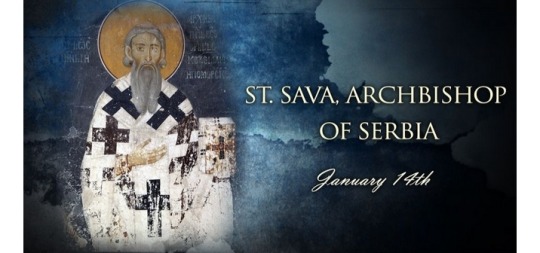
Originally Prince Rastko Nemanjic, he was the first Patriarch of Serbia (1219-1233) and is an important Saint in the Serbian Orthodox Church.
In his youth (around 1192), St. Sava escaped from home to join the Orthodox monastic colony on Mount Athos.
He was given the name Sava. He first traveled to a Russian monastery and then moved to a Greek monastery, Vatoped.
At the end of 1197, his father, King Stefan Nemanja, joined him.
In 1198, the former prince and king restored the abandoned monastery Hilandar, which was the center of Serbian Christian monastic life at that time.
St. Sava's father took the monastic vows under the name Simeon. He died in Hilandar on 13 February 1200. He was also canonized as Saint Simeon.
After his father's death, Sava retreated to an ascetic monastery in Kareya, which he built himself in 1199. He also wrote the Kareya typicon both for Hilandar and for the monastery of ascetism.
St. Sava managed to persuade the Patriarch of the Greek/Byzantine Orthodox Church to elevate him to the position of the first Serbian archbishop, thereby establishing the independence of the archbishopic of the serbian church in the year of 1219.
St. Sava is celebrated as the founder of the independent Serbian Orthodox Church. He is also the patron saint of education and medicine among Serbs.
Since the 1830s, St. Sava has become the patron saint of Serbian schools and students.
He is also regarded as the father of Serbian education and literature. He authored the Life of St. Simeon (Stefan Nemanja, his father), the first Serbian hagiography.
After participating in a ceremony called "blessing of the waters," he developed a cough that progressed into pneumonia.
He died from pneumonia on 14 January 1235. He was buried at the Cathedral of the Holy Forty Martyrs in Trnovo.
He remained in Trnovo until 6 May 1237, when his sacred bones were moved to Mileseva monastery in southern Serbia.
Three-hundred and sixty years later, the Ottoman Turks dug out his bones and burnt them on the main square in Belgrade.
The temple of St. Sava in Belgrade, whose construction was planned in 1939 and began in 1985, was built on the place where his holy bones were burned.
6 notes
·
View notes
Text
Belgrade, Serbia
We spent the last 6 days of our in Belgrade. Our drive from Kopaonik was serene until we reached Belgrade. We saw some picturesque old forts being converted into hotels (?) on our way to Belgrade:

Being the capital of Serbia, Belgrade is quite buzzy with a lot of character. But like in any city, there are some not so good things as well about Belgrade. As with any urban city, the traffic was chaotic and we felt probably Serbs in Belgrade honk more than us Indians. We went to a movie in a posh mall but sadly there were a bunch of young noisy brats who were a nuisance to everyone in the theatre and they were hooting, screaming all along the movie duration.
All the streets were filled with Coca Cola sponsored Christmas lights:

As is the norm with every European city, street artists were galore in Belgrade streets:

As many would know, the most famous Serbian from modern history is Novak Djokovic. The world’s No 1 tennis player is everywhere on Belgrade billboards:

We explored Belgrade Design Design district one day and saw some excellent wall graffiti:

On the new years eve , we visited St Sava Church , also sometimes referred sometimes as Temple of St Sava is the most famous Orthodox Cathedral. It is the main cathedral of the Serbian Orthodox Church.

Once inside, the scale of the cathedral stuns you. It is a multi level cathedral with awe inspiring architecture and murals:

St Sava is the world’s second largest (next only to Hagia Sophia in Turkey) Orthodox Church. We have seen many famous Churches in Europe but the architecture inside St Sava is quite unique:


The usual and nothing new. S with her finger pointing St Sava Church:

D
0 notes
Text
The Sava Cathedral, which was built on the place where the holy relics of St. Sava, the son of the monarch, the founder of the Serbian Orthodox church, are thought to have been burned by the Turks, is known as the largest Orthodox church in the world. Although it does not have the characteristics of a cathedral in the technical sense, it is considered as such because of its size. This church-temple, which is one of the symbols of the city and has an important place for Serbian Orthodox, is also likened to the Helsinki Cathedral with its magnificent architecture. Saint Sava Cathedral Resembling Hagia Sophia in appearance, the church is the most famous religious temple of the orthodox world in Belgrade. It is very close to Slavija Square, the busiest place in the city. You can easily see the Cathedral from Terazije Square. The construction of the church, which started in 1935, could not be completed even today due to some political events and wars. Repair work is still going on inside the St. Sava Church. It is expected that the mosaics inside the church will be finished before it can be completed. The mosaics are expected to be completed in 2019, the 800th anniversary of the Serbian Orthodox Church. (adsbygoogle = window.adsbygoogle || []).push(); It is rumored that the building, which is one of the most important symbols of the city, was burned by one of the Ottoman pashas, Sinan Pasha, in 1594. In 1894, 300 years after the ruins of the church were burned, the restoration works started slowly, but the two world wars and the changing balances brought the construction work of the church to a halt from time to time. The Church of St. Sava, built in the Serbian-Byzantine architectural style, will have the title of the largest Orthodox church in the Balkans with a capacity of 10 thousand people. Address: Svetosavski Square | Karadjordje's Park, Vracar, Belgrade 011, Serbia Nearby Places: Nikola Tesla Museum, Kalenic Pijaca Website: https://www.hramsvetogsave.com
0 notes
Text
Belgrade sights - 11 most interesting places
New Post has been published on https://tripsterguru.com/belgrade-sights-11-most-interesting-places/
Belgrade sights - 11 most interesting places
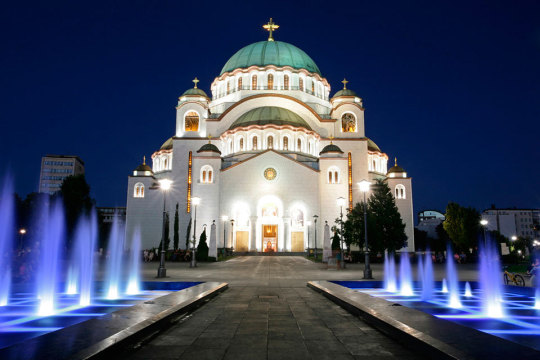
Serbia is a multinational country with a rich and complicated history. The territory of the current state includes lands previously owned by Hungarians, Turks and other peoples. Its culture was affected by the influence of East and West. The capital city of Belgrade, unlike many European capitals, is quiet and calm. The houses of the cobbled streets of the old quarters are like doll houses. The new areas, with their dilapidated walls, remind of Yugoslavia and military aggression by NATO. The nature of plains and plateaus is rich in greenery and full-flowing rivers.
Belgrade fortress
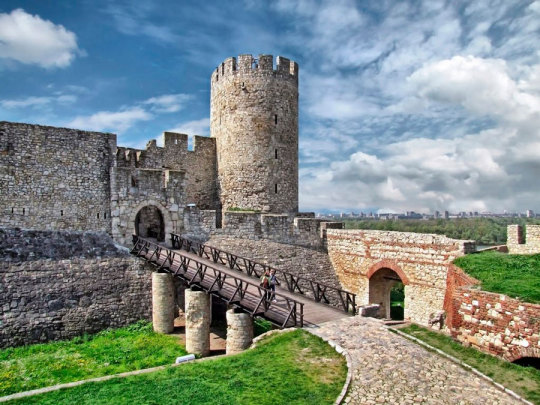
Belgrade Fortress is located in a picturesque place where the Sava River flows into the Danube. Strategically important location determined the fate of the citadel. Like the confluence of two water streams, the economic, political and cultural paths of the East and West converged here. Fierce battles were fought hundreds of times for fortification; tens of times its walls were partially or completely destroyed. Nowadays it is peaceful and calm, because now it is one of the most significant historical monuments for Belgrade. The Belgrade fortress was built 2 millennia ago from white stone, where the name of the city came from. High fortified walls are adjacent to the large cozy park Kalemegdan. The word is translated from Turkish as “battlefield”.
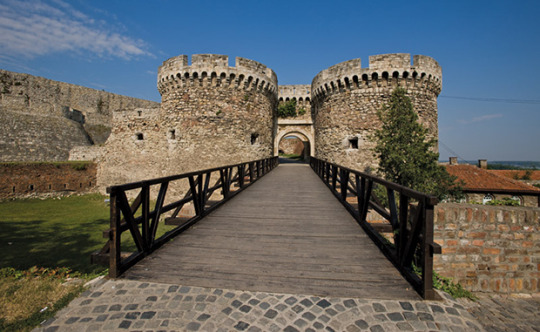
The Turks called the stone fortification a “hill of thoughts”, which corresponds to the atmosphere of peace reigning here. The name of the garden Kalemegdan was assigned to the citadel. Within the walls of the Belgrade fortress are 12 gates, the main of which are Istanbul. Walking along the pedestrian street of Prince Mikhail with its bright shop windows, you will find yourself in Kalemegdan. You can also get there by public transport.
Entrance to the territory is free. Of interest to tourists is not only the fortress, but also several museums, existing churches, towers, statues and the Roman well. For 10-15 euros you can join the tour and learn more about the centuries-old history of this place, its myths and legends. Capital residents have chosen Kalemegdan for relaxation.
A fascinating view of the city opens from the observation deck. On holidays, concerts and festivities are organized on the territory of the park, and on weekdays you can sit in a cafe or just eat ice cream.
Belgrade Zoo
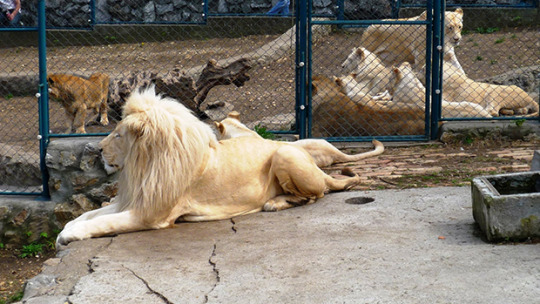
The walls of the Belgrade fortress are conveniently located a spacious zoo with the saying “Park of good hope.” In its history, it was bombarded three times: twice during the Second World War and in 1999 during the armed conflict between NATO and Yugoslavia. In memory of those days, the zoo got its bright name, and its leadership seeks to keep pets in the most comfortable conditions. The zoo is home to more than 2 thousand individuals of 270 species of animals and birds. At the same time, they are looked after properly: the freedom of pets is almost unlimited, and their cleanliness pleasantly surprises. Feathered walk along the paths of the zoo. In a special pavilion you can play with lambs, kids and others.
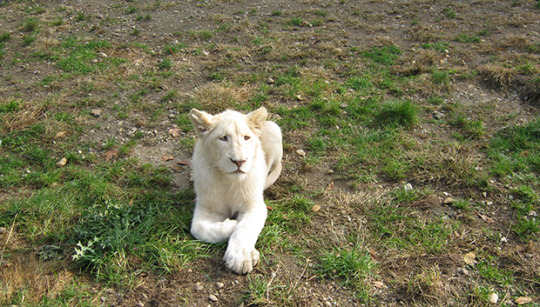
The zoo of Belgrade distinguishes several of its attractions from the rest. Since 1986, special attention has been paid to albinos. Animals with a white color are collected around the world as a symbol of the “white city”. In the year of the last shelling, a baby elephant was born in the zoological garden. He was given the nickname Rambouillet by the name of the city in France, in which peace talks were held regarding the situation in Kosovo. Veteran of the zoo can be considered the world’s oldest alligator Muya, who appeared here in 1937. The menagerie meets its visitors from 8.00 to 19.30 in the summer, and until 17.00 – in the winter. Ticket sales end a little earlier. The cost of visiting: 400 Serbian dinars (about 4 euros) from 15 years, 300 dinars (3 euros) – from 3 to 15 years. To avoid confusion, carry cash in the national currency and do not give food to animals. After the death of a giraffe through the fault of visitors, the size of the fine for feeding animals was greatly increased.
Princess Lyubitsa Palace
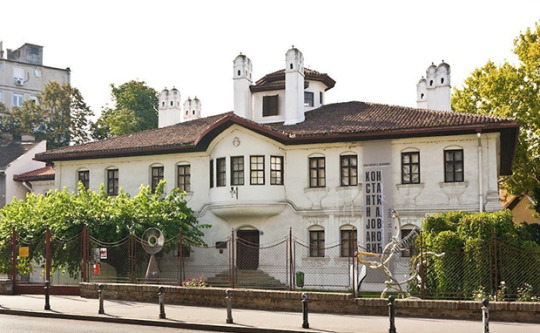
How do you imagine the palace for the princess? In fairy tales it is described as a high castle surrounded by two-meter walls. But in life, everything is a little different. One of the most beautiful buildings of the old city is the palace of the princess (she is also called the princess) of Lyubitsa. The low-rise house, traditional for Belgrade, in white, was erected in 1830 by decree of Prince Milos Obrenovic in the place of their old dwelling. In the new building made 3 floors, one of them is a basement. On the second floor next to the princess’ chambers, a hammam was arranged. Over a two-century history, the palace has changed several destinations.
At different times, it housed a lyceum, a court, a boarding school for the deaf, various museums. At the end of the 20th century, the building was declared a cultural monument and restored. Now the former residence of the wife of Prince Milos is part of the Museum of the capital of Serbia. The palace is valuable in that its architecture, layout and interior decoration are an excellent example of the combination of eastern and European culture of the 19th century.
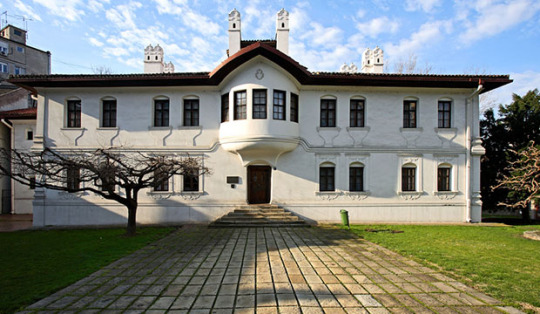
The museum’s collection consists of furniture and art, personal items of the princess. Here are excursions with the saying “Coffee with Princess Lubitz.” The museum keepers will not only tell the history of the palace and the life features of the ruling family, but also treat them with strong Turkish coffee with Turkish delight. In the basement periodically informative lectures of cultural and historical subjects and creative evenings are held. The cultural monument is located in the old part of the city near the Kalemegdan fortress. Ticket price will be 200 Serbian dinars. There are discounts for students. The museum is open from 9 a.m. to 6 p.m. Day off: Monday. The exhibition is allowed to photograph without the use of flash.
St. Sava Cathedral

In Belgrade, white is an unofficial symbol of the city. On the hill Vračar in the center of the Serbian capital rises the majestic church of St. Sava of Serbia, built of white marble. According to Christian canons, the sanctuary is not a cathedral, but thanks to its impressive size, this name was entrenched in the people. It is one of the largest Orthodox buildings in the world. Its height is 82 meters, 18 crosses crown the bathing, 49 bells fit in the bell tower. Indoors, at the same time, 10 thousand believers can be present, the choir is designed for 800 singers.
The landmark has no centuries-old history, but a monument was erected on the site of the burning of the relics of St. Sava according to the prototype of St. Sophia Cathedral in Constantinople. Planning for construction began in 1894, and the “first brick” was laid only 40 years later. Since 2004, the temple is considered open to parishioners; it still has not completed the interior decoration. It is worth a glimpse for the sake of the huge and amazing mosaic of Jesus Christ, located under the central dome. Finding the Cathedral of St. Sava is not difficult. It is located in the center of Belgrade on a hill and majestically rises above the city. Around the temple is a cozy park, nearby is the National Library of Serbia.
Museum of Nikola Tesla

Each nation has its own heroes. The Serbs are proud of their great compatriot scientist, whose work has had a tremendous significance on the development of science. The only official museum of Nikola Tesla is located in a small mansion in Belgrade. Even if you have no idea who this man was and why he is considered a great physicist, be sure to visit the museum. Here, an excursion takes place every hour, the first part of which consists of a short video and a short guide story, the second part is much more interested in demonstrating the experiments once conducted by the inventor.
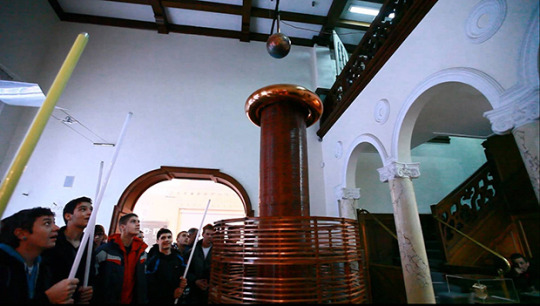
During the experiments, everyone can feel like a Jedi and an illusionist. The glowing “sword” and lightning from touching the Tesla coil are real phenomena that were subsequently shown in films and computer games. In addition to the exposition of various equipment for experiments, the exhibition has a collection of personal items and original documents owned by Nicola Tesla. Among other exhibits is a urn with the ashes of a scientist. The museum is open from 10 a.m. to 6 p.m. from Tuesday to Sunday. For those who understand the Serbian language, the tour will cost 250 Serbian dinars. For English-speaking tourists, the cost will be 500 Serbian dinars, and for groups of 10 people – 300. For children under 7 years, admission is free. The mansion is located in the central part of Belgrade at the address: ul. Krunska 51.
House of flowers
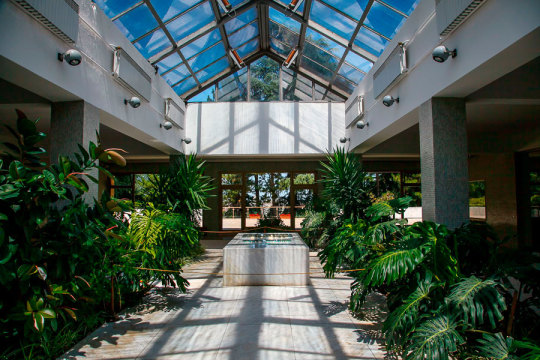
The flower house in Belgrade has an indirect relation to floristry, in fact it is a mausoleum in which the bodies of former Yugoslav leader Josip Broz Tito and his last wife rest. The memorial complex was originally a greenhouse in the residence of the Marshal. In his free time, Tito liked to plant flowers and take care of the garden. Now silence and tranquility reign in the pavilions, trees grow, bizarre statues stand. You will not find an open coffin with an embalmed body, only a memorial plate. In the tomb is a small museum of Josip Tito. His collection includes some personal items and numerous gifts received by the former president from officials. The mausoleum is often not crowded. On the birthday of the father of the people on May 25 and on the day of his death on May 4, the memorial complex is visited by the family, friends and comrades of Josip Broz Tito. The flower house is located on the outskirts of the city. Nearby is the Museum of the History of Yugoslavia. You can get to them by trolleybuses that run along routes No. 40 and 41. Mausoleum opening hours: from 10.00 to 18.00. Day off: Monday.
Ticket price: 300 dinars (approximately 3 euros).
Quarter Skadarliya
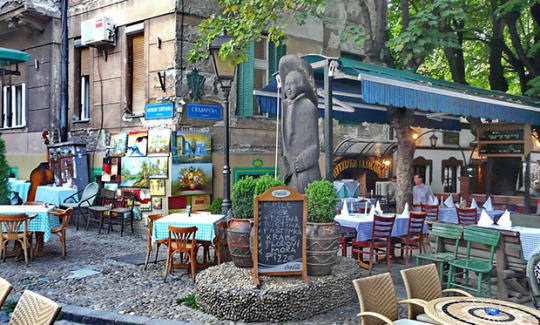
Being in museums, having seen enough of various sights of the capital of Serbia, it is pleasant to walk along a quiet street, to sit in a cozy restaurant. In Belgrade, its old part, there is a small region of Skardalia, which is considered to be Bohemian, and travelers compare it with Parisian Montmartre, Odessa Deribasovskaya, and Moscow Old Arbat. On a street with a stone pavement, it is deserted during the day. Toward evening, street artists and musicians appear here, selling souvenirs and trinkets from the stalls. There are antique shops in Scardalia, where you can plunge deeper into the culture of the Serbs. The oldest restaurants in the city are also located here. To live music in a cozy atmosphere you will get acquainted with the national cuisine, hearty and varied.
Initially, the area was inhabited by people with creative professions, they were attracted to inexpensive apartments and delicious food in neighboring cafes. Writers, poets, actors and dancers created an atmosphere of constant celebration in the quarter. This light mood is still in the air. The brick walls of low houses are painted like canvases and decorated with fresh flowers. The Skardalia quarter is easy to find in the Stari Grad community nearby the Republic Square. Tourists are advised to carry Serbian dinars in case you should decide to buy some souvenirs or have dinner. Girls should not shoe high-heeled shoes and thin stilettos.
Gardosh Hill and Millennium Tower
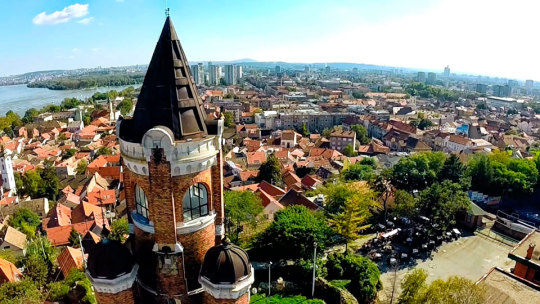
In order to look at Belgrade from above, you don’t need to parachute or fly by helicopter, just climb to the observation deck of the Millennium Tower (also called the Yanko Tower), towering on Gardosh Hill in the ancient Zemun district. The building, 36 meters high, was built in the 19th century, when this land was part of Austria-Hungary. The government erected a monument as a symbol of the millennium of the settlement of Hungarians on the banks of the Danube. Hence the name of the tower. It makes sense to climb Gardosh Hill not only for the panorama of the city. Walking to the hill on Zemun will be a pleasant pastime both in the morning and in the evening. The tower is open around the clock and admission is free. For 15-20 euros, you can join the tour with a Russian-speaking guide.
The old quarters can be reached by buses coming from the city center. Routes Nos. 704, 706 and 707 lead here. The closest Zemun Pochta stop is to the tower, but you can get off earlier and take a walk along the narrow, winding bridge past the toy houses to the stairs on Stara Visoka Street. You will be taken to the Millennium Tower. On the way to the hill you will find several small churches that add color to the bedroom area, which has preserved the best traditions of Europe. A road leads to the hill from the picturesque wide riverbed of the Danube, along which the city promenade stretches with an alley, benches and stunning views. Not far from it there are several small restaurants and cafes in which they cook deliciously at home. On the menu, pay attention to dishes of fresh fish caught in local rivers.
Avalan TV Tower
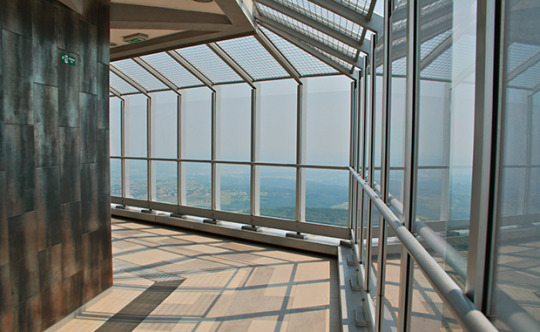
The Millennium Tower in the old quarter of Gardosh is an authentic monument of Slavic culture. A more modern high-rise building in Belgrade, which majestically rushes into the sky of the capital, is the Aval TV Tower. The attraction is of interest to tourists for several reasons. Firstly, there are no buildings above it on the Balkan Peninsula. Secondly, all over the world there are only a few buildings for which the basis is an equilateral triangle. Thirdly, the tower was completely destroyed during the military conflict with NATO in 1999. It was completely restored and in 2010 is open to the public.
Aval TV Tower is located outside the city on Mount Avala. Near it, 3 monuments of different times were erected. You can get to the place from the capital by regular buses No. 401, 403 and 405. In the summer, on the weekend, an additional route No. 400 is launched. The cost of visiting the observation deck is 200 dinars. For 400 dinars, you can buy a ticket that includes a drink in the restaurant located above. The height of the TV tower reaches 205 meters, and the exit to the site is at a distance of 119 meters from the ground. Here the wind blows and is cool enough, so sitting at the cafe with a cup of coffee or hot chocolate will be more pleasant to watch the panorama that opens. Aval TV Tower greets its visitors daily from 9.00 to 20.00.
Skyscraper Genex

The second tallest building in the Serbian capital is the Genex skyscraper, also known as the “West Gate of Belgrade”. Its highest point is 140 meters. The bizarre, futuristic structure was designed and erected in 1977, when Art Nouveau and brutalism dominated the architecture. The skyscraper consists of 2 buildings of 35 floors, connected from above by a two-story bridge with a rotating turret.
Inside this design is a restaurant. Be sure to dine in it if you are not afraid of heights. From the windows of the institution offers a bewitching view of the western part of Belgrade. Due to its originality, the complex is perhaps the most memorable in all of Eastern Europe. Some publications include him in dozens of the most unusual skyscrapers in the world. The house received its unofficial name because of the Genex company, which occupies one half of the skyscraper. To get to the sights, use buses number 65, 74.
Fortress Vrsac
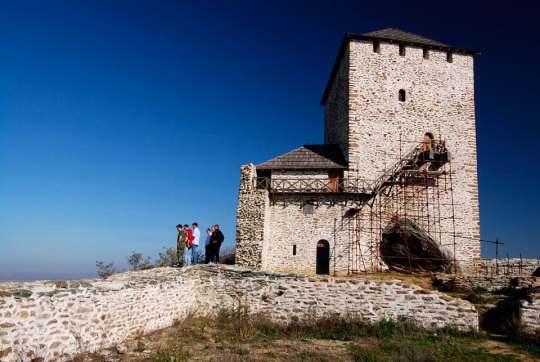
One of the oldest military fortifications in Serbia is considered a fortress with the unusual name of Vrsac. It is located at the foot of the Carpathians to the west of the border with Romania. The citadel was built in the 15th century during the Turkish wars from granite and mica, therefore, after reconstruction on sunny days, its walls seem to glow. The fortress rises high above the city that grew next to it. The heroic history of the Serbian army is reflected in the coat of arms of Vrsac. The distance from Belgrade to the fortress is about 90 km. Going here just for the sake of the fortress is not worth it, only the castle and several fortress walls remained intact. Set aside a day to explore the ancient city of Vrsac and its attractions.
The historical part of the city is attracted by such architectural monuments as St. Nicholas Cathedral, “Vladichansky Dvor”, St. Gerhard Cathedral and the City Hall. In the vicinity of Vrsac there is the Monastery of Mesic and the town of Bela Crkva. A tour of the historical sites can be diluted with a visit to the winery and a tasting of local wines. Public transport runs from the capital of Serbia to the city of Vrsac. In order to have time in one day to see all the important historical monuments of this part of the country and visit the vineyards, it is better to use the services of guides. The price of the tour depends on the duration of the trip, the route and the number of people in the group.
#Avalan TV Tower#Belgrade fortress#Fortress Vrsac#Gardosh Hill and Millennium Tower#House of flowers#Museum of Nikola Tesla#Princess Lyubitsa Palace#Quarter Skadarliya#Skyscraper Genex#St. Sava Cathedral
0 notes
Photo
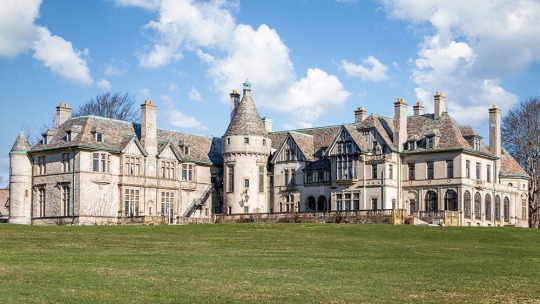
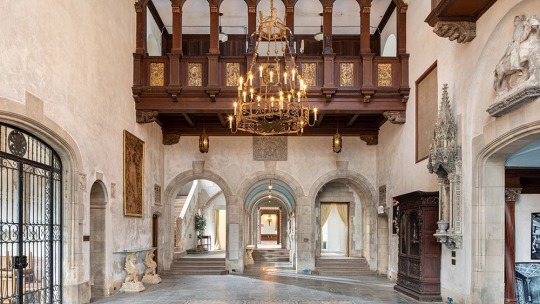
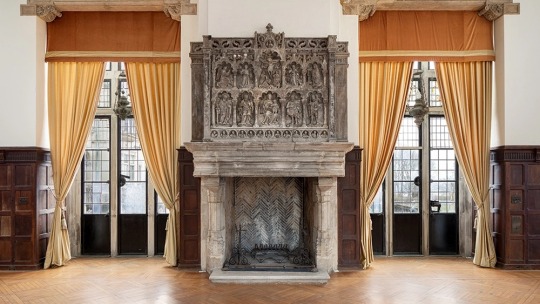
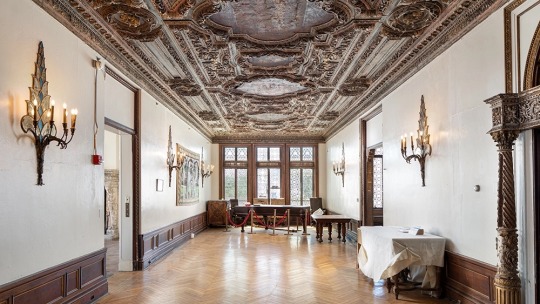
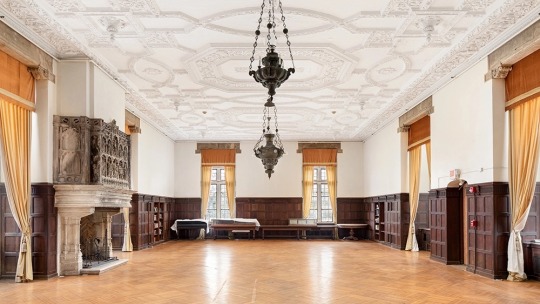
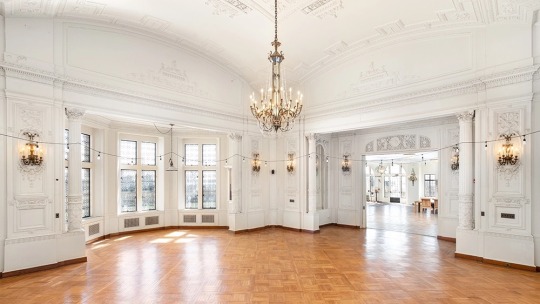
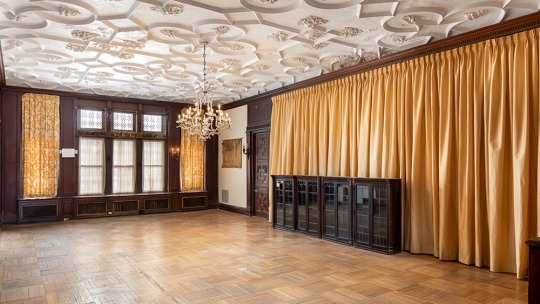
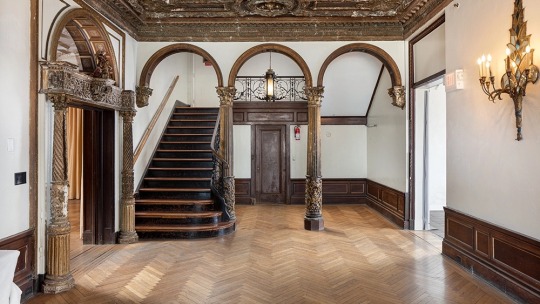

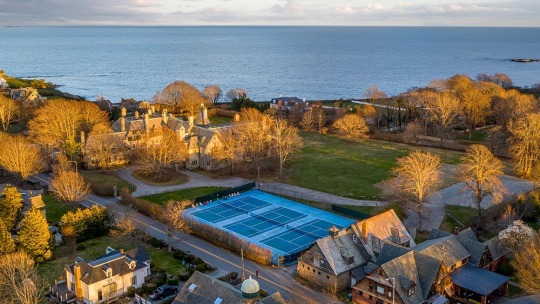
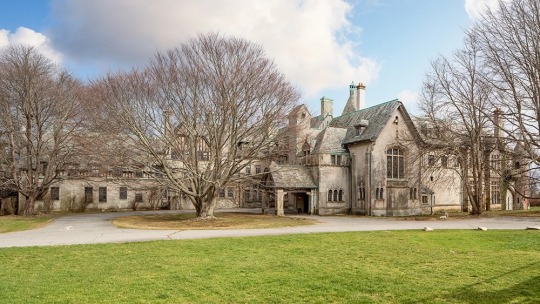
The Beautiful $30 Million Newport Gilded Age Mansion
Seaview Terrace is Newport's largest privately owned Gilded Age mansion. But you might need to call Ghostbusters before you move in.
Don’t worry, the ghostly spirits are said to be friendly. Though the door handles that rattle and turn by themselves and the male voice that asks “Hello, is that you?” might send shivers down your spine.
Back in 2011, the Syfy Network’s Ghost Hunters team spent the night inside the Seaview Terrace mansion, the former Newport, Rhode Island, home of whiskey baron Edson Bradley. During the filming, the fearless Hunters recorded muffled voices, footsteps and clunks on floors above, and felt dramatic temperature changes in the “creepy” third-floor tower.
But in the eleven years since, perhaps the spirits have decamped elsewhere. “I’m sorry to say that my visits to the house have been entirely ghost-free. Though I must admit that I’ve not been there at night,” Lea Savas, listing broker with Edge Realty RI, said.
Even without that supernatural component, Seaview Terrace has quite the backstory. Spread out over a staggering 43,770-square feet, this historic Elizabethan-Revival mansion is the fifth largest of Newport’s famed, Gilded Age “summer cottages” that include Cornelius Vanderbilt II’s conspicuous-consumption pile, the Breakers.
The home sits on eight hilltop acres just off Ruggles Avenue and runs alongside Newport’s famed Cliff Walk. For beach lovers, it’s a short stroll to Sheep Point Cove and the crashing Atlantic. Inside, Seaview boasts 29 bedrooms, 18 bathrooms, 10 fireplaces and a Great Room worthy of an English castle.
“It’s Seaview Terrace’s fascinating history, dating back to 1907 and Washington DC, that sets the house apart,” explains Savas, who shares the high-profile $29.9 million listing with Edge Realty RI colleague Aryn Hawks.
Back then, Edson Bradley Jr. was president of Kentucky whiskey distiller W.A. Gaines & Company, with exclusive rights to the “Old Crow” whiskey label. Under him, the company became the largest producer of sour mash whiskey in the world.
In 1907, Bradley purchased a mansion on Washington DC’s Dupont Circle and filled it with complete rooms from French chateaux that he had shipped to DC intact. But tiring of Washington society life, Bradley and his wife decided to move to fast-emerging Newport. In 1922, they bought the so-called Kernochan residence, a brick and half-timbered English manor house-style mansion, and commissioned leading New York architect Howard Greenley to do a complete makeover.
That redesign included disassembling most of the DuPont Circle mansion brick by brick, including all those imported rooms, and trucking it all to Newport to incorporate it into the Kernochan home. The move, which took two years, was the subject of an episode of Ripley’s Believe it or Not.
Following Bradley’s death in 1935, Seaview Terrace changed hands numerous times. It was used as a girls’ boarding school, and as the fictional Collinwood Mansion in ABCs’ hugely-successful ’60s vampire soap opera Dark Shadows.
After falling into disrepair, the estate was “rescued” by entrepreneur and mansion preservationist Martin Carey, who, in 1974, paid $270,000 for the spread. He promptly leased it to Salve Regina University, which used it until 2009. Since then it has largely stood empty.
Today, the three-story mansion features a first floor kept largely intact from the Edson Bradley days. Still preserved is the massive great room with its Whispering Gallery modeled after the one at St. Paul’s Cathedral in London. It also has an early Renaissance stained-glass window, entitled “The Flagellation”, that was created in 1547 for Italy’s Duomo di Milan cathedral.
But according to Savas, while the first floor is still “magnificent”, the second and third floors still are stripped-out and basic from their years of being used as school dorms and accommodation for visiting America’s Cup sailing teams.
“If definitely needs some loving restoration. In terms of moving-in now and using the entire property as a home, probably not. But once restored, once returned to its former glory, it will be like nothing else in Newport. This is truly a once-in-a-lifetime opportunity, a true piece of history,” she adds.
By Howard Walker.
#The Beautiful $30 Million Newport Gilded Age Mansion#newport rhode island#real estate#high end#luxury#luxury home#luxury real estate#luxury living#luxury lifestyle#billionaire#billionaire lifestyle#rich#expensive#$$$#masnion#mega mansion#beauty#beautiful#sexy
39 notes
·
View notes
Photo




On August 16th 1864 Scottish suffragette, Elsie Inglis, was born at Naini Tal hill station in India.
There are very few people who were neither born or died in Scotland that are as highly regarded and respected as Scots, than Elsie Inglis, the only other that springs to mind is Eric Liddell.
Elsie parents were Scots Harriet Lowes Thompson and John Inglis, who worked for the East India Company, when her father retired from his job in 1878 the Inglis family returned to Scotland and settled in Edinburgh.
Having studied medicine at the Edinburgh School of Medicine for Women Inglis subsequently established her own medical college. She qualified as a doctor and secured a teaching appointment at the New Hospital for Women. A keen suffragette Inglis was later to found her own maternity hospital entirely staffed by women.
In 1906 Inglis played a notable role in the establishment of the Scottish Women’s Suffrage Federation. The outbreak of war in Europe in August 1914 brought about a temporary ceasefire where political - including suffragette - issues were concerned, and Inglis promptly suggested the creation of women’s medical units on the Western Front.
The British government reacted to Inglis’s idea was frowned upon, she was told "'my good lady, go home and sit still'. . Nevertheless a similar offer made directly to the French government was warmly received and Inglis travelled to France within three months of the outbreak of war, with the Abbaye de Royaumont hospital, containing some 200 beds, in place by December 1914. This was later followed by a second hospital at Villers Cotterets in 1917.
Inglis was active in arranging for the despatch of women’s units to other fighting areas aside from the Western Front, the first Scottish Women's Hospital field unit was formed in December 1914 in a town called Kragujevac in Serbia.others followed at Salonika, Romania, Malta and Corsica in 1915 and to Russia the following year.
Inglis herself served in Serbia from 1915 until the Serbian government and army withdrew to Corfu ,she had been held prisoner for a period until U.S. diplomatic pressure brought about her release. Thereafter based in Russia she was taken ill, the government demanded she come home but Elsie refused until the Serbian soldiers were guaranteed safe passage. The boat brought them back to Newcastle and Elsie, who was crippled with illness, could hardly walk as she greeted Serbian soldiers on deck. She was so frail she had to be carried off to a nearby hotel where she died on 26th November 1917.
Elsie’s body was taken “home” to Edinburgh where it was interned in Dean Cemetery, beforehand it lay in state in St Giles’ Cathedral. Her funeral there on 29th November was attended by both British and Serbian royalty.
The SWH continued its work for the duration of the war, sending out more units and raising money for the work. Remaining funds were used to establish the Elsie Inglis Memorial Maternity Hospital in Edinburgh in July 1925, it closed in 1988.
There is a Memorial Drinking Fountain “Crkvenac” in Mladenovac, Serbia commemorating her work for the country. A plaque commemorates her at 8 Walker Street, Edinburgh. A portrait of her is included in the mural of heroic women by Walter P. Starmer at St Jude's Church, Hampstead Garden, London. In 1922 a large tablet to her memory (sculpted by Pilkington Jackson) was erected in the north aisle of St Giles on Edinburgh’s Royal Mile.
A movie is set to be made of her biography, penned by her sister, Eva called The Woman With the Torch
In April 1916, Inglis became the first woman to be awarded the Order of the White Eagle (First class) by the Crown Prince Alexander of Serbia at a ceremony in London. She had previously been awarded the Order of Saint Sava.
28 notes
·
View notes
Photo




Serbian Orthodox Cathedral of St. Sava 20 W 26th St, New York, NY 10010
Trinity Chapel Complex, later the Serbian Orthodox Cathedral of St. Sava, was a historic church at 15 West 25th Street between Broadway and the Avenue of the Americas (6th Avenue) in the NoMad neighborhood of Manhattan, New York City.
The church building was constructed in 1850-55 and was designed by noted architect Richard Upjohn. It was built as one of several uptown chapels of the Trinity Church parish, but was sold to the Serbian Eastern Orthodox parish in 1942, re-opening as the Cathedral of St. Sava in 1944.
Firefighters battle a three-alarm fire in the historic Serbian Orthodox Cathedral of St. Sava, Sunday, May 1, 2016, in New York. Authorities say no injuries have been reported in the blaze that broke out early Sunday evening in the church.
└─► The New York Times
#manhattan#broadway#6th avenue#avenue of the americas#serbian orthodox cathedral of st. sava#the serbian orthodox cathedral of st. sava#richard upjohn#trinity church nyc#trinity church#trinity church parish#serbian eastern orthodox parish#lower manhattan#25th street#firefighter#the nomad#the cathedral of st. sava
22 notes
·
View notes
Text
Today, the Church remembers Sts. Cyril, Priest and Monk, and Methodius, Bishop, both Missionaries.
Orate pro nobis.
Saints Cyril and Methodius (AD 826–869, 815–885) were two brothers who were Byzantine Christian theologians and Christian missionaries. Through their work they influenced the cultural development of all Slavs, for which they received the title "Apostles to the Slavs".
They are credited with devising the Glagolitic alphabet, the first alphabet used to transcribe Old Church Slavonic. After their deaths, their pupils continued their missionary work among other Slavs. Both brothers are venerated in the Orthodox Church as saints with the title of "equal-to-apostles". In 1880, Pope Leo XIII introduced their feast into the calendar of the Roman Catholic Church. In 1980, Pope John Paul II declared them co-patron saints of Europe, together with Benedict of Nursia.
The two brothers were born in Thessalonica (located in present-day Greece) – Cyril in about AD 827–828 and Methodius about 815–820. Cyril was reputedly the youngest of seven brothers; he was born Constantine, but was given the name Cyril upon becoming a monk in Rome shortly before his death, according to the Vita Cyrilli ("The Life of Cyril"). Methodius was born Michael and was given the name Methodius upon becoming a monk at Mysian Olympus (present-day Uludağ), in northwest Turkey. Their father was Leo, a droungarios of the Byzantine theme of Thessalonica, and their mother was Maria.
The exact ethnic origins of the brothers are unknown, there is controversy as to whether Cyril and Methodius were of Slavic or Byzantine Greek origin, or both. The two brothers lost their father when Cyril was fourteen, and the powerful minister Theoktistos, who was logothetes tou dromou, one of the chief ministers of the Empire, became their protector. He was also responsible, along with the regent Bardas, for initiating a far-reaching educational program within the Empire which culminated in the establishment of the University of Magnaura, where Cyril was to teach. Cyril was ordained as priest some time after his education, while his brother Methodius remained a deacon until AD 867/868.
About the year 860, Byzantine Emperor Michael III and the Patriarch of Constantinople Photius (a professor of Cyril's at the University and his guiding light in earlier years), sent Cyril on a missionary expedition to the Khazars who had requested a scholar be sent to them who could converse with both Jews and Saracens. After his return to Constantinople, Cyril assumed the role of professor of philosophy at the University while his brother had by this time become a significant player in Byzantine political and administrative affairs, and an abbot of his monastery.
In 862, the brothers began the work which would give them their historical importance. That year Prince Rastislav of Great Moravia requested that Emperor Michael III and the Patriarch Photius send missionaries to evangelize his Slavic subjects. His motives in doing so were probably more political than religious. Rastislav had become king with the support of the Frankish ruler Louis the German, but subsequently sought to assert his independence from the Franks. It is a common misconception that Cyril and Methodius were the first to bring Christianity to Moravia, but the letter from Rastislav to Michael III states clearly that Rastislav's people "had already rejected paganism and adhere to the Christian law." Rastislav is said to have expelled missionaries of the Roman Church and instead turned to Constantinople for ecclesiastical assistance and, presumably, a degree of political support. The Emperor quickly chose to send Cyril, accompanied by his brother Methodius. Their first work seems to have been the training of assistants. In AD 863, they began the task of translating the Bible into the language now known as Old Church Slavonic and travelled to Great Moravia to promote it. They enjoyed considerable success in this endeavour. However, they came into conflict with German ecclesiastics who opposed their efforts to create a specifically Slavic liturgy.
For the purpose of this mission, they devised the Glagolitic alphabet, the first alphabet to be used for Slavonic manuscripts. The Glagolitic alphabet was suited to match the specific features of the Slavic language. Its descendant script, the Cyrillic, is still used by many languages today.
The brothers wrote the first Slavic Civil Code, which was used in Great Moravia. The language derived from Old Church Slavonic, known as Church Slavonic, is still used in liturgy by several Orthodox Churches and also in some Eastern Catholic churches.
It is impossible to determine with certainty what portions of the Bible the brothers translated. The New Testament and the Psalms seem to have been the first, followed by other lessons from the Old Testament. The "Translatio" speaks only of a version of the Gospels by Cyril, and the "Vita Methodii" only of the "evangelium Slovenicum," though other liturgical selections may also have been translated.
The mission of Cyril and Methodius had great success among Slavs in part because they used the people's native language rather than Latin or Greek. In Great Moravia, Constantine and Methodius also encountered missionaries from East Francia, representing the western or Latin branch of the Church, and more particularly representing the Carolingian Empire as founded by Charlemagne, and committed to linguistic, and cultural uniformity. They insisted on the use of the Latin liturgy, and they regarded Moravia and the Slavic peoples as part of their rightful mission field.
When friction developed, the brothers, unwilling to be a cause of dissension among Christians, decided to travel to Rome to see the Pope, and seek a solution that would avoid quarreling between missionaries in the field. In 867, Pope Nicholas I (858-867) invited the brothers to Rome. Their evangelizing mission in Moravia had by this time become the focus of a dispute with Archbishop Adalwin of Salzburg (859–873) and Bishop Ermanrich of Passau (866-874), who claimed ecclesiastical control of the same territory and wished to see it use the Latin liturgy exclusively.
The brothers sought support from Rome, and arrived there in 868, where they were warmly received. This was partly due to their bringing with them the relics of Saint Clement; the rivalry with Constantinople as to the jurisdiction over the territory of the Slavs would incline Rome to value the brothers and their influence.
New Pope Adrian II (867-872) gave Methodius the title of Archbishop of Sirmium (now Sremska Mitrovica in Serbia) and sent him back in 869, with jurisdiction over all of Moravia and Pannonia, and authorisation to use the Slavonic Liturgy. The brothers were praised for their learning and cultivated for their influence in Constantinople. Anastasius Bibliothecarius would later call Cyril "a man of apostolic life" and "a man of great wisdom". Their project in Moravia found support from Pope Adrian II, who formally authorized the use of the new Slavic liturgy. Subsequently Methodius was ordained as priest by the pope himself, and five Slavic disciples were ordained as priests (Saint Gorazd, Saint Clement of Ohrid and Saint Naum) and as deacons (Saint Angelar and Saint Sava) by the prominent bishops Formosus and Gauderic. Cyril and Methodius along with these five disciples are collectively venerated (mainly by the Bulgarian Orthodox Church) as "Seven Saints". The newly made priests officiated in their own languages at the altars of some of the principal churches. Feeling his end approaching, Cyril became a Basilian monk, was given the new name Cyril, and died in Rome fifty days later (AD 14 February 869).
Methodist, by now an archbishop, dies on AD 6 April 885. After decades of missionary work by the brothers, translating the Holy Scriptures, they helped the Slavic peoples to remain linguistically, culturally, and ecclesiastically distinct during a period when they were pawns in the territorial rivalry between Constantinople and Rome. The Cyrillic alphabet gradually replaced Glagolitic as the alphabet of the Old Church Slavonic language, which became the official language of the Bulgarian Empire and later spread to the Eastern Slav lands of Kievan Rus'. Cyrillic eventually spread throughout most of the Slavic world to become the standard alphabet in the Eastern Orthodox Slavic countries. Hence, Cyril and Methodius' efforts also paved the way for the spread of Christianity throughout Eastern Europe.
Methodius' body was buried in the main cathedral church of Great Moravia.
Almighty and everlasting God, by the power of the Holy Spirit you moved your servant Cyril and his brother Methodius to bring the light of the Gospel to a hostile and divided people: Overcome all bitterness and strife among us by the love of Christ, and make us one united family under the banner of the Prince of Peace; who lives and reigns with you and the Holy Spirit, one God, now and for ever.
Amen.
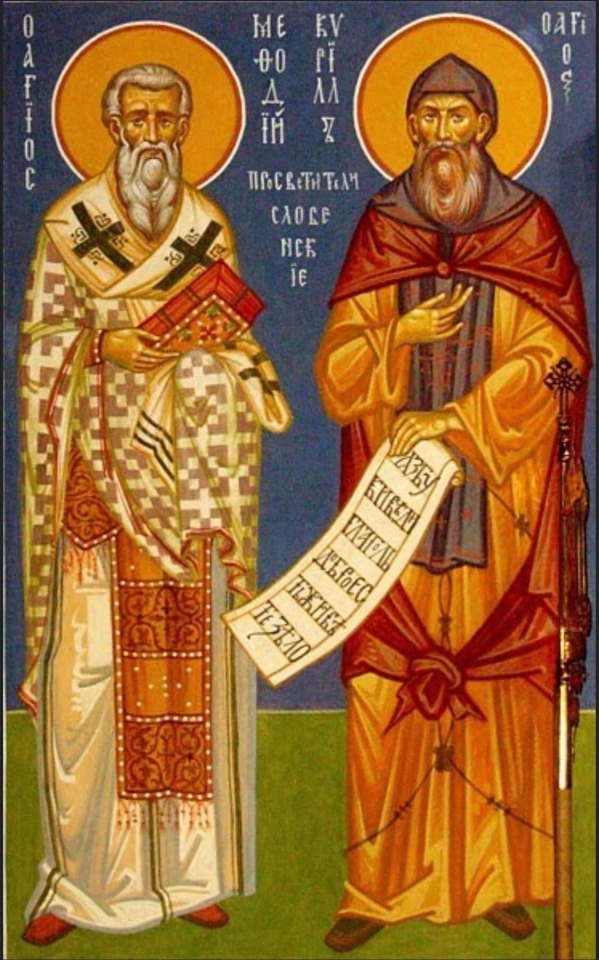
#father troy beecham#christianity#troy beecham episcopal#jesus#father troy beecham episcopal#saints#god#salvation
5 notes
·
View notes
Photo

St. Sava Church, Belgrade, Serbia (by Chronis Yan)
#belgrade#serbia#church#cathedral#saint sava#st sava#st sava cathedral#architecture#vertical#travel#reflection#europe#europe travel#orthodox church#balkans
1K notes
·
View notes
Text

St. Sava Cathedral [Source: OrthoChristian.com]
7 notes
·
View notes
Text
Saints&Reading: Sat., Nov., 30, 2019
Apostle and Martyr St. Andrew

The Holy Apostle Andrew the First-Called was the first of the Apostles to follow Christ, and he later brought his own brother, the holy Apostle Peter, to Christ (John 1:35-42). The future apostle was from Bethsaida, and from his youth he turned with all his soul to God. He did not enter into marriage, and he worked with his brother as a fisherman. When the holy Prophet, Forerunner and Baptist John began to preach, Saint Andrew became his closest disciple. Declaring Christ to be the Lamb of God, Saint John the Baptist himself sent to Christ his own two disciples, the future Apostles Andrew and John the Theologian.
After the Descent of the Holy Spirit upon the Apostles, Saint Andrew went to the Eastern lands preaching the Word of God. He went through Asia Minor, Thrace, Macedonia, he reached the River Danube, went along the coast of the Black Sea, through Crimea, the Black Sea region and along the River Dniepr he climbed to the place where the city of Kiev now stands.
He stopped overnight on the hills of Kiev. Rising in the morning, he said to those disciples that were with him: “See these hills? Upon these hills shall shine forth the beneficence of God, and there will be a great city here, and God shall raise up many churches.” The apostle went up around the hills, blessed them and set up a cross. Having prayed, he went up even further along the Dniepr and reached a settlement of the Slavs, where Novgorod was built. From here the apostle went through the land of the Varangians towards Rome for preaching, and again he returned to Thrace, where in the small village of Byzantium, the future Constantinople, he founded the Church of Christ. The name of the holy Apostle Andrew links the mother, the Church of Constantinople, with her daughter, the Russian Church...continue reading
Archimandrite Saint Sebastian Dabovich of San Francisco
by Hieromonk Damascene


Born to Serbian immigrants in San Francisco in 1863, Archimandrite Sebastian Dabovich has the distinction of being the first person born in the United States of America to be ordained as an Orthodox priest, [1] and also the first native-born American to be tonsured as an Orthodox monk. His greatest distinction, however, lies in the tremendous apostolic, pastoral, and literary work that he accomplished during the forty-eight years of his priestly ministry. Known as the “Father of Serbian Orthodoxy in America,” [2] he was responsible for the founding of several of the first Serbian churches in the New World. This, however, was only one part of his life’s work, for he tirelessly and zealously sought to spread the Orthodox Faith to all peoples, wherever he was called. He organized parish communities of Orthodox Christians of varied ethnic backgrounds; took part in the work of St. Alexis Toth of Wilkes-Barre to bring former Uniates more fully into the Orthodox ethos and way of life; and labored to bring Episcopalians into the saving enclosure of the Orthodox Church. He was an Orthodox apostle of universal significance.
Describing the vast scope of Fr. Sebastian’s missionary activity, Bishop Irinej (Dobrijevich) of the Serbian Orthodox Diocese of Australia and New Zealand has written: “Without any outside funding or organizational support, he carried the gospel of peace from country to country.... Concentrating much of his work in the United States, he ceaselessly traveled back and forth across the American continent, using every available mode of transportation—from stagecoach to railroad to foot. His wider ministry stretched from the Aleutian Peninsula of Alaska, to Russia and Japan, to small Balkan towns on the coasts of the Black and Adriatic Seas.
“By every report Sebastian Dabovich was not one to ask about jurisdictional or national affiliation before setting out on long journeys to minister to Orthodox Christians in mining communities, lumber camps, or far-distant towns or villages. He offered his pastoral services with a free hand to anyone who was in need. Just as he gave no thought to his own comforts as a youth, caring more for the needs of others than for his own concerns, Fr. Sebastian denied himself all worldly comforts of home, family, or earthly possessions, so that he could provide for the spiritual needs of the Russian, Serbian, Bulgarian, Greek, Syrian, or Arab Orthodox Christians who required his aid.” [3]
It is said that Fr. Sebastian baptized more people than any other Serbian priest of the Western Hemisphere. [4] St. Nikolai (Velimirovich) of Zhicha, Serbia, who buried Fr. Sebastian at the Zhicha Monastery when the latter reposed there in 1940, called him “a viceless man” and fittingly designated him “the greatest Serbian missionary of modern times.” [5]
Ten years after Fr. Sebastian’s repose, St. Nikolai wrote of him: “Here is a man who indebted all the Serbian race, especially all the Serbs and all the Serbian organizations in America. Should that man remain without a monument or any sign of honor on American soil? He does not need it. He did not wish it. All he wished to his last breath was the Kingdom of Heaven, which I believe he has obtained by the grace of his Lord. But his people need it; his posterity needs it. The Serbian people always cultivated the noble virtue of gratitude. Let them express their traditional gratitude to this remarkable Serbian—Father Sebastian Dabovich.” [6]
Today, nearly seven decades after his repose, Fr. Sebastian is being shown fitting honor and gratitude by the Serbian Orthodox Church both in the homeland and in the diaspora. With the blessing of Bishop Hrizostom of Zhicha and of Bishop Maxim of Western America, Fr. Sebastian’s remains have been unearthed from his grave in Zhicha Monastery in Serbia and are to be transferred to the St. Sava Church in Jackson, California: the first church founded by Fr. Sebastian, and the first Serbian Orthodox Church in the Western Hemisphere. On September 1 (n.s.), 2007, the Divine Liturgy will be celebrated in Jackson to mark this occasion, with numerous hierarchs and clergymen participating. The Liturgy will be followed by a memorial service for Fr. Sebastian, the interment of his remains in the St. Sava Church, and a talk on Fr. Sebastian’s life by the above-mentioned Bishop Irinej. In the eyes of many, these events are a step toward the Orthodox Church’s recognition of Fr. Sebastian as a saint. “Even now,” Bishop Irinej has written, “[Fr. Sebastian] is considered worthy of canonization among the Serbian people. May that day indeed come quickly! The epitaph on his tombstone at Zhicha Monastery reads most appropriately, ‘The First American Serbian Orthodox Apostle.’ Holy Apostle Sebastian, pray for us!” [7]
To commemorate the transfer of Fr. Sebastian’s remains to America, we are dedicating our 2008 Calendar to his memory. This Calendar presents photographs and descriptions of important people in Fr. Sebastian’s life and of churches which he either founded or served during the half-century of his pastoral ministry. A Life of Fr. Sebastian—the first full biography to appear in any language—is being published concurrently in our magazine, The Orthodox Word.
+ + +
As part of his missionary labors, Fr. Sebastian compiled one of the first English translations of the Divine Liturgy, and wrote and published, from his own meager means, some of the first English-language books of Orthodox catechism. Besides bearing witness to his missionary and pastoral zeal, Fr. Sebastian’s books also testify to his ardent love for Jesus Christ and His Church, to the depth of his knowledge of the Orthodox Faith, to his careful adherence to the teachings of the Church, to his literary and poetic gifts, and to his profound sense of spiritual beauty. A large portion of the books consists of sermons that he gave in the Russian Orthodox cathedral in San Francisco and in mission parishes on various feast days. These sermons reveal him as an inspired preacher whose words could soar to the heights and at the same time strike deeply the hearts of his listeners. Below we present one such sermon, which he published in his book Preaching in the Russian Church (San Francisco, 1899).
Endnotes
Alaskan-born priests were ordained before Fr. Sebastian, but this was when Alaska was still part of Russia. John R. Palandech, Commemorative Book of the Serbian Orthodox Church in Chicago, 1905-1955.
Mirko Dobrijevich (later Irinej, Bishop of Australia and New Zealand), “The First American Serbian Apostle—Archimandrite Sebastian Dabovich,” Again, vol. 16, no. 4 (December 1993), pp. 13, 15.
John R. Palandech, Commemorative Book. Quoted in Mirko Dobrijevich (Bishop Irinej), p. 15.
Bishop Nikolai (Velimirovich), “Father Sebastian Dabovich,” in Serb National Federation Commemorative Book, 1951.
Ibid.
Mirko Dobrijevich (Bishop Irinej), p. 15.
What follows is a condensed version of a much lengthier Life of Archimandrite Sebastian that appeared in The Orthodox Word, Vol. 43, Nos. 102 (252-253). St. Herman Press was very gracious to make available the entire Life in PDF format (16 MB) if you would like to read the longer version (recommended). —OCIC Ed.
2 Cor 11:1-6 NKJV
Concern for Their Faithfulness
11 Oh, that you would bear with me in a little folly—and indeed you do bear with me. 2 For I am jealous for you with godly jealousy. For I have betrothed you to one husband, that I may present you as a chaste virgin to Christ. 3 But I fear, lest somehow, as the serpent deceived Eve by his craftiness, so your minds may be corrupted from the [a]simplicity that is in Christ. 4 For if he who comes preaches another Jesus whom we have not preached, or if you receive a different spirit which you have not received, or a different gospel which you have not accepted—you may well put up with it!
Paul and False Apostles
5 For I consider that I am not at all inferior to the most eminent apostles. 6 Even though I am untrained in speech, yet I am not in knowledge. But we have [b]been thoroughly manifested among you in all things.
Footnotes:
2 Corinthians 11:3 NU adds and purity
2 Corinthians 11:6 NU omits been
Luke 12:12-40 NKJV
40 Therefore you also be ready, for the Son of Man is coming at an hour you do not expect.”
New King James Version (NKJV) Scripture taken from the New King James Version®. Copyright © 1982 by Thomas Nelson. All rights reserved. At Bibleglateway
3 notes
·
View notes